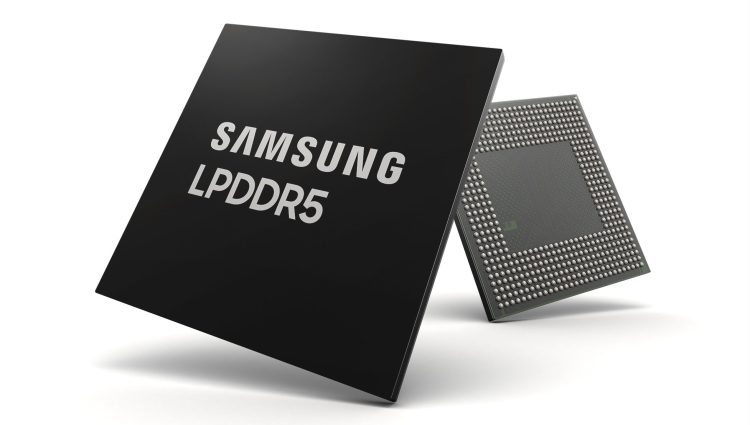Unthinkably fast cellular networks will demand mobile devices with similarly speedy components, so Samsung’s new LPDDR5 memory chips are coming at just the right time. The South Korean company announced today that it has developed the first mobile-ready 8-gigabit LPDDR5 DRAM chip — super-fast, low-power (LP) memory specifically suited to 5G and AI-powered mobile applications.
Low-power DDR memory has been a critical component in tablets since the days of the original iPad and Samsung Galaxy Tab 7.0, reducing both energy use and chip size while offering laptop-caliber speeds. Over the years, it has become critical to smartphones and laptops, such that the latest Qualcomm, Samsung, Intel, and Apple processors all rely on LPDDR4 memory.
Samsung is offering LPDDR5 in two flavors: a version with a 6,400 megabits per second (Mbps) data rate at 1.1 volts, and a 5,500 Mbps version at 1.05 volts. Each version is significantly faster than the latest version of LPDDR4, called 4X, which peaks at 4,266 Mbps, yet LPDDR5 uses new power consumption technologies to reduce energy use by up to 30 percent.
In practical terms, this means up to 50 percent faster memory in the next generation of mobile devices compared with today’s fastest flagship models. With the right wireless hardware, Samsung notes that LPDDR5 is capable of transferring 14 full-HD video files (3.7GB each) in one second, which makes it suitable for “AI and machine learning applications,” as well as “Ultra HD-compatible for mobile devices worldwide.”
June 5th: The AI Audit in NYC
Join us next week in NYC to engage with top executive leaders, delving into strategies for auditing AI models to ensure fairness, optimal performance, and ethical compliance across diverse organizations. Secure your attendance for this exclusive invite-only event.
LPDDR5 isn’t likely to debut in devices until next year, as Samsung says that it’s currently planning to begin mass production based on customer demand. It’s unclear whether the new chips will find a place in the smallest pocket-sized devices or remain tablet- and laptop-bound, as the company’s prototype 8-gigabyte package uses eight chips from an asterisked “10-nanometer class” process that’s actually “between 10 and 20 nanometers” in size.
Samsung has also developed higher-capacity standard DDR5 chips without low-power features, as well as even faster GDDR6 chips for graphics cards. However, the size and power demands of both chips preclude them from being used in typical mobile devices.

